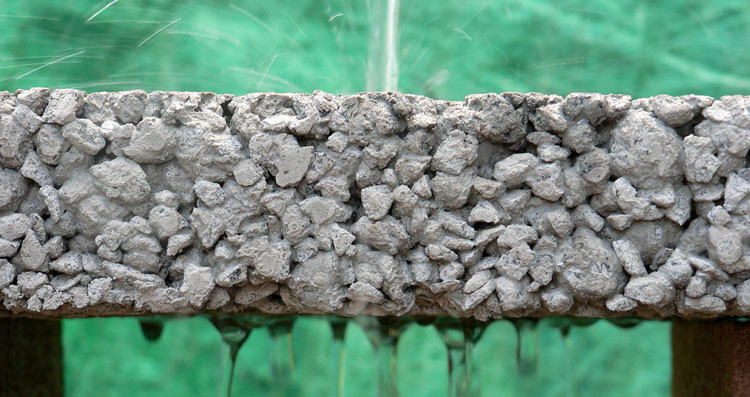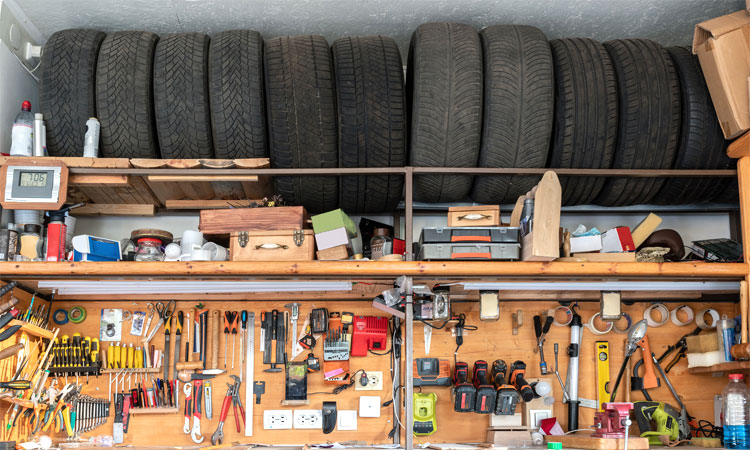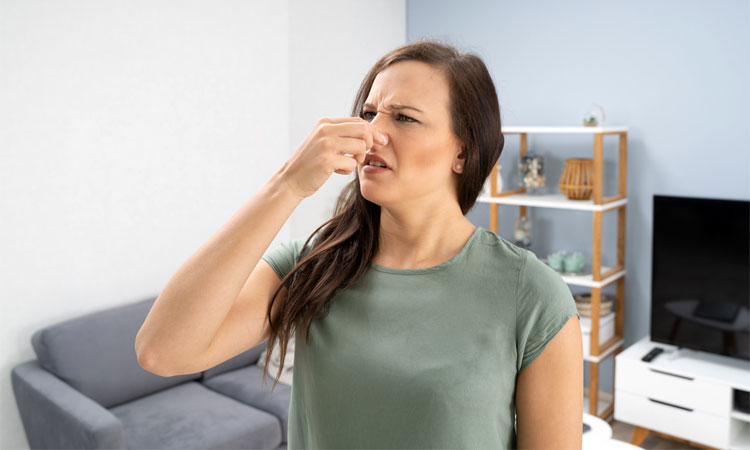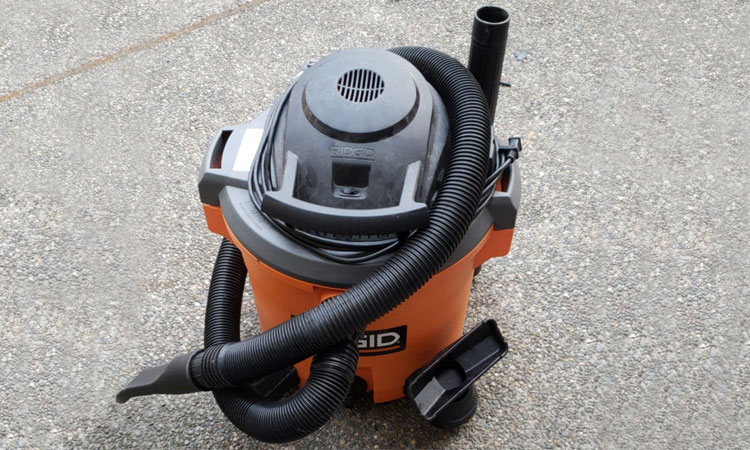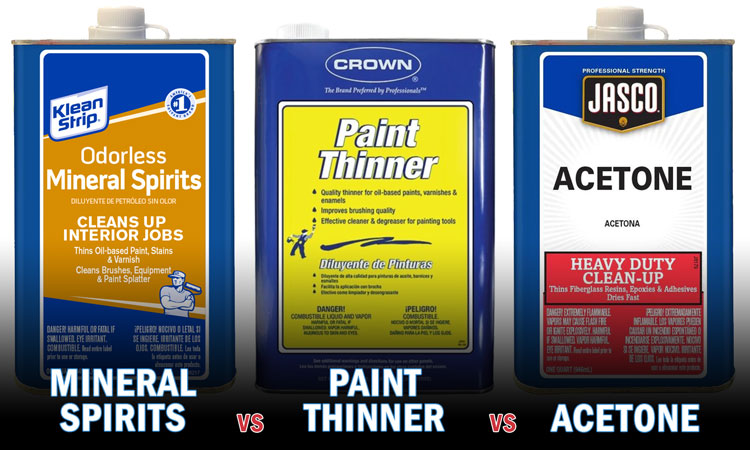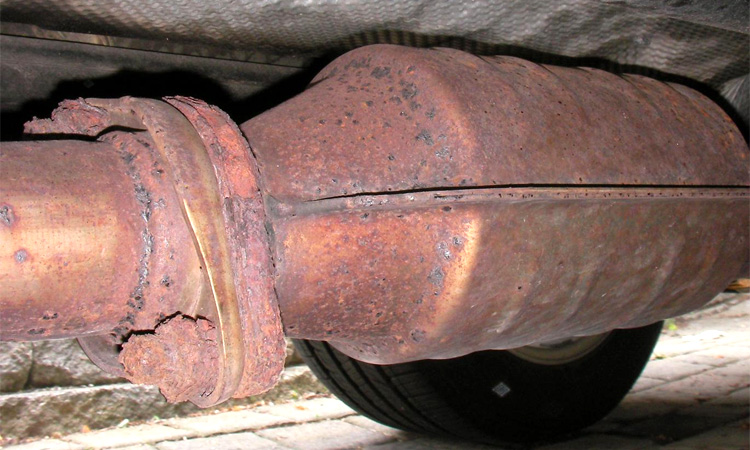How to Get Dog and Cat Urine Smell Out of Concrete
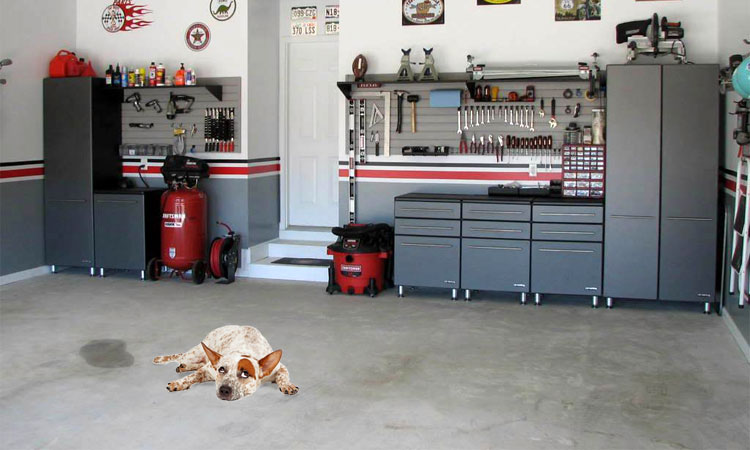
Sometimes accidents happen even with the best of pets. A little vinegar is often enough to clean the carpet, but your garage can be a lot tougher.
The following tips can help you remove pet urine out of concrete so your basement or garage won’t suffer from that little “oops” moment.
See Also: How to Get Rid of Gasoline Smell in Your House
Getting Started
Unlike carpets and other thin surfaces, cleaning urine out of concrete is a multi-step process. The good news is that following all of the steps will not only eliminate that existing dog or cat pee odor, it can help prevent future issues.
The Trouble with Concrete
Despite its sturdy appearance, concrete is quite porous. This means any liquid can get trapped within its surface easily. Unfortunately, that bit of dog pee can seep in too far to simply scrub out.
What make matters even worse is that the ammonia smell can lie dormant after the pee dries, only to be reactivated the next time your floor gets wet. You’ll have to perform a deep clean to get it all out, then seal the surface to prevent future seepage.
Initial Preparation
Due to the porous nature of concrete, you can’t simply clean one small area. Instead, the entire floor will need to be tended to. Begin by clearing off the floor and using a push broom, sweep up any loose debris.
Locating The Urine
The first and arguably most important step is to locate all of the spots where urine may have ended up. This is a simple procedure, and skipping it could lead to problems down the road.
Get a blacklight (a blacklight bulb placed in your flashlight or work lamp is a cheap option) and scan the floor in total dark for signs of pee. You might also find that place where you cut your finger last month. Mark those areas with a piece of chalk for easy reference.
Step 1 – The Initial Clean
Scrubbing out the worst of the urine with household cleaning supplies will make the third step more effective and help reduce the risk of staining. There are three different types of concrete cleaners to choose from, both chemical and non-chemical.
Trisodium Phosphate (TSP)
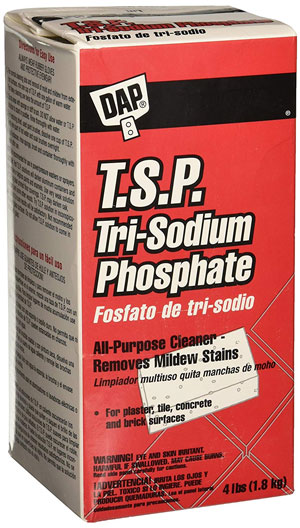
Add 1/2 cup of TSP per gallon of really hot water. Apply the mixture to the affected area, making sure to work only a small area (no more than three square feet) at a time, as it evaporates quickly.
Gently scrub the spot, then allow the TSP mixture to sit for at least five minutes. If it dries sooner, you will want to apply more to the area. The uric acid will react to the TSP, so you may get some very strong odor while it does its job.
Pour some very hot water onto the area to rinse and remove it using a shop or wet vac. Rinse twice more and allow the area to dry naturally overnight.
Hydrogen Peroxide
This mixture gets good results but takes a few days to complete treatment. Take two drops of Dawn, and two teaspoons of baking soda. Add these to two cups of hydrogen peroxide in a glass bowl. Stir gently until the baking soda has completely dissolved, being careful not to agitate the liquid more than necessary.
Either pour or spray this mixture onto the places where you found urine, making sure to completely cover the area, allowing it to evaporate naturally. The sitting peroxide mixture will soak into the concrete, eliminating traces of urine as it goes. Repeat this treatment every 24 hours for between 3 and 5 days to ensure the urine is completely dissolved.
Vinegar
One of the most essential cleaning products, a mix of two parts vinegar to one part hot water is a tried-and-true method of fighting urine odors. It can be used in the same way as TSP, but as a much safer alternative. Use this if you’re worried about pets getting into the area or if you wish to stay away from harmful chemicals.
Be careful when using vinegar on concrete as it can react with the alkaline in the concrete and create unwanted marks or patterns. It’s a good idea to test in a small area first.
Step 2 – Treatment of the Stain
Once the worst of the urine has been removed, you’ll need to treat the area with an enzymatic cleaner and seal the entire floor. This is due to the fact that you can remove the urine smell without removing the urine itself.
Using an Enzymatic Cleaner
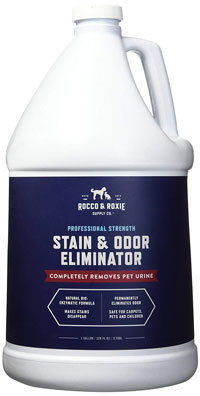
Pour a portion of the cleaner onto the stain, working once again in a small area (no more than three square feet). The solution needs to remain for at least 10 minutes before drying to ensure it soaks completely in. Use a scrub brush on tough areas. Heavy concentrations will bubble and may require a second treatment.
Allow the floor to dry overnight, laying a tarp over the area if it’s drying too fast. Once all areas have been fully treated and dried, you’ll be ready for the final step.
See Also: Best Concrete Cleaners
Step 3 – Prevention
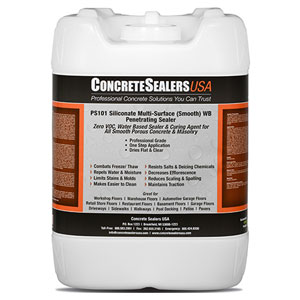
Applying a Concrete Sealer
A good concrete sealer can protect your floor for several years. You should begin by using a concrete cleaner, following the instructions on the label and washing the entire floor.
Rinse the floor thoroughly and allow it to air dry for 24 hours. Next, seal any cracks using concrete caulk and allow it to cure.
Depending upon the type of sealer you get, the instructions and final effect could be vastly different. Some sealers dry clear, while others give a glossy sheen to the floor.
Be sure to follow the instructions carefully and apply to one fourth of the floor at a time while keeping the area well-ventilated. It takes 3-4 days to completely cure, and at least one day before you can walk on it.

